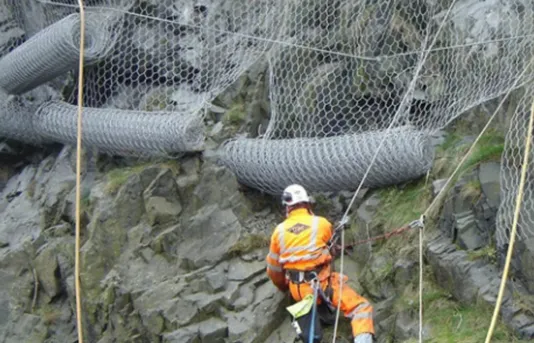-
 Phone:
Phone: -
 Email:
Email:

rock netting
Rock Netting An Innovative Solution for Erosion Control
In an age where environmental conservation and sustainability are paramount, innovative solutions for erosion control have become increasingly important. One such method gaining popularity is rock netting, a technique that combines environmental science with engineering to protect natural landscapes from the degradation caused by wind and water. This article explores the concept of rock netting, its applications, benefits, and challenges, and how it is shaping the future of erosion management.
Understanding Rock Netting
Rock netting, often referred to as rockfall netting or rockfall protection netting, involves the installation of specialized meshes or nets made from high-tensile steel cables that contain rocks in a designated area. These nets are strategically placed on slopes, mountainsides, and other vulnerable terrains to prevent rockfalls and soil erosion. By holding back loose rocks and earth materials, rock netting acts as a physical barrier that enhances slope stability.
The concept can be likened to that of a safety net; just as a safety net prevents someone from falling off a high ledge, rock netting stops debris from cascading down and causing damage to infrastructure, vehicles, and, importantly, human life.
Applications of Rock Netting
The applications of rock netting are vast and varied. Commonly, this technique is employed in civil engineering projects, highway construction, and mining operations where steep slopes are prevalent. In highway constructions, rock netting is crucial for ensuring the safety of drivers by preventing falling rocks from obstructing roads or causing accidents.
Additionally, rock netting finds use in protecting natural habitats and landscapes
. It helps to preserve the integrity of ecosystems by preventing soil erosion, which can lead to habitat destruction. In this context, rock netting can be viewed as a tool for promoting biodiversity, helping to maintain the intricate balance of local flora and fauna.Benefits of Rock Netting
rock netting

One of the primary benefits of rock netting is its durability. Made from high-quality steel materials, rock nets are designed to withstand harsh weather conditions, making them a reliable long-term solution for erosion control. Furthermore, the installation process is relatively straightforward, often requiring minimal disruption to the surrounding area compared to other methods like concrete barriers.
Rock netting also promotes sustainability. By decreasing erosion, these nets help to protect water quality by reducing sediment runoff into nearby streams and rivers. This not only protects aquatic life but also maintains clearer waterways for recreational and agricultural uses.
Economically, while the initial installation cost of rock netting can be significant, the long-term benefits often outweigh the initial investment. By preventing erosion and landslides, rock netting can save municipalities and construction companies substantial amounts in repairs and potential negligence claims.
Challenges and Considerations
Despite its myriad benefits, rock netting is not without challenges. One of the primary concerns is the potential for vegetation damage during installation. Care must be taken to mitigate destruction of the local flora, as healthy vegetation plays an essential role in stabilizing soil on its own.
Additionally, the effectiveness of rock netting can be influenced by the geo-mechanical characteristics of the hill or slope being protected. Engineers must conduct thorough site assessments before installation to ensure the chosen method is suitable for the specific conditions of the area.
Conclusion
Rock netting represents a forward-thinking approach to erosion control that combines functionality with environmental responsibility. As the world faces increasing threats from climate change and extreme weather patterns, the importance of effective erosion management methods like rock netting cannot be overstated. By investing in innovative solutions that protect our landscapes and promote sustainability, we take one step closer to preserving our planet for future generations.
As environmental concerns continue to drive technological advancements, rock netting stands out as a practical and effective method of erosion control. Its ability to balance human infrastructure needs with the preservation of natural ecosystems is a testament to the potential of engineering solutions in creating a more sustainable future.
-
Wire Mesh for Every Need: A Practical SolutionNewsJul.25,2025
-
Steel Fences: Durable, Secure, and Stylish OptionsNewsJul.25,2025
-
Roll Top Fencing: A Smart Solution for Safety and SecurityNewsJul.25,2025
-
Cattle Farm Fencing Solutions for Maximum SecurityNewsJul.25,2025
-
Affordable Iron Binding Wire SolutionsNewsJul.25,2025
-
Affordable Galvanized Wire SolutionsNewsJul.25,2025
-
Wire Hanger Recycling IdeasNewsJul.25,2025








